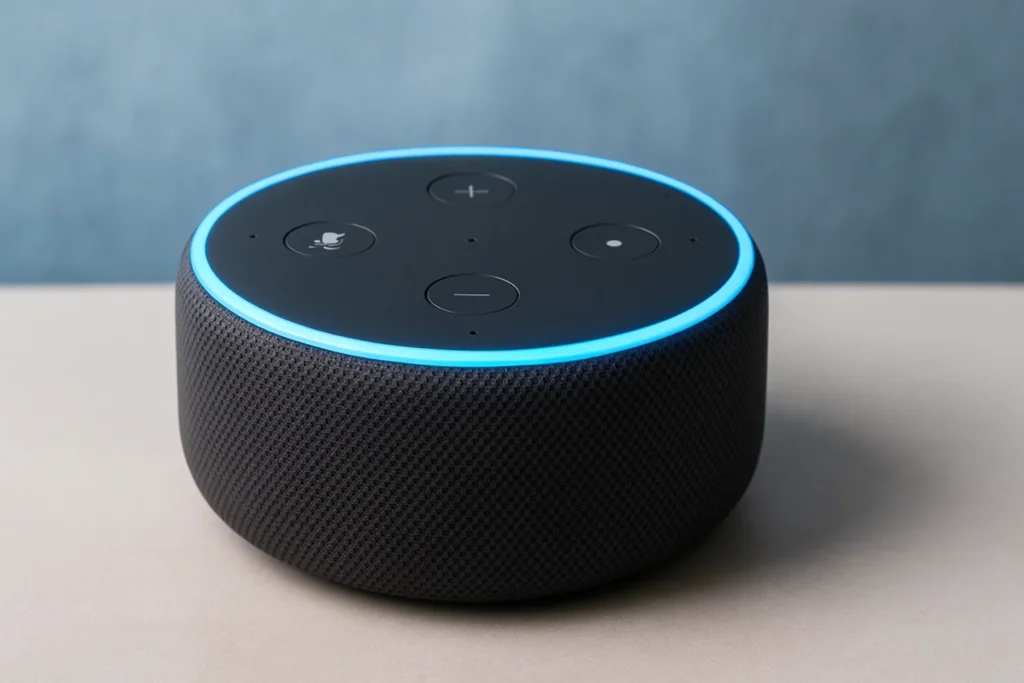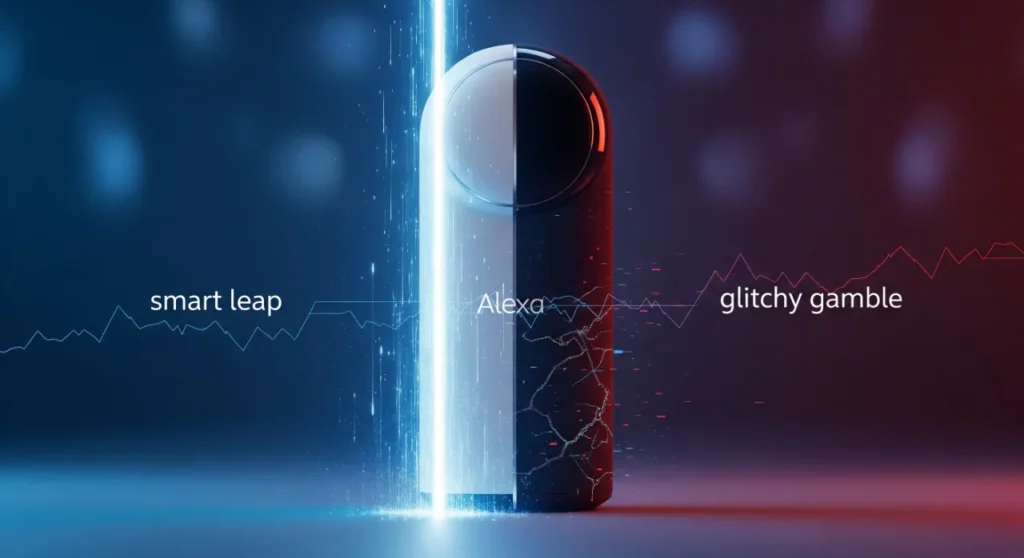Amazon has given Alexa a long-awaited AI “brain transplant,” merging generative AI with its classic voice assistant. But does Alexa+ actually deliver—or is it just a flashier version of the same old bot?
Alexa Gets Its Biggest Brain Upgrade Yet—And It’s a Mixed Bag
For more than a decade, Alexa has been a reliable—if sometimes underwhelming—digital butler. From setting kitchen timers to reading the weather forecast, Amazon’s voice assistant carved out a place in millions of homes. But the arrival of ChatGPT’s fluid voice conversations in 2023 changed the game, forcing Alexa to evolve or risk irrelevance.
Now, that evolution is here. Meet Alexa+, Amazon’s biggest overhaul yet, powered by large language models (LLMs) similar to the ones behind ChatGPT and Anthropic’s Claude.
The promise? A smarter, more natural, and more versatile Alexa that not only talks like a human but also performs multi-step tasks without the clunky back-and-forth we’re used to.
The reality? A little more complicated.
Key Takeaways
- Alexa+ is smarter and more conversational, thanks to LLM-powered AI.
- Multi-step requests now work better—no wake word needed every time.
- Bugs and errors still plague basic commands, making it unreliable.
- Some promised features aren’t live yet, leaving early adopters waiting.
A Long Road to the AI Glow-Up
Amazon didn’t just slap new AI into Alexa. The company spent years wrestling with technical hurdles, internal delays, and a key challenge: marrying the creativity of generative AI with Alexa’s rock-solid reliability for everyday tasks.
Daniel Rausch, Amazon’s VP for Alexa and Echo, explained the problem:
“Large language models are stochastic, meaning they work on probabilities, not strict rules. That makes Alexa more creative—but less predictable.”
In other words, LLMs can craft witty, detailed responses, but they can also get facts wrong or ramble unnecessarily. To keep Alexa functional, Amazon built an orchestration system combining more than 70 AI models—some in-house, others from partners—so that each request is routed to the model best suited for the job.

The New Alexa in Action
In early tests, Alexa+ delivered some clear wins:
- Natural conversation: No need to repeat the wake word; follow-ups feel fluid.
- Better multitasking: “Set three kitchen timers for 15, 25, and 45 minutes” worked flawlessly.
- Creative output: Alexa+ can generate and read long bedtime stories on demand.
- Useful integrations: Booking restaurant tables or emailing trip itineraries is now possible.
Amazon is even rolling out Prime-exclusive pricing—free for members, $19.99/month for others.
But Here’s Where It Falls Apart
The problem? Alexa+ sometimes forgets how to be… Alexa.
When asked to cancel an alarm—a task the old Alexa nailed—Alexa+ froze. A document emailed for summarization returned an error. And in one case, it hallucinated a product recommendation, citing the wrong “best” box grater according to Wirecutter.
One test even led to Alexa+ repeatedly saying, “Oh no, my wires got crossed,” when asked for AI installation help.
Some hyped features aren’t ready either. Presence-based “routines” that trigger actions when you walk into a room? Still disabled.
Amazon insists these kinks will be ironed out soon, but for now, Alexa+ is a work in progress.
Why It’s So Hard to Get Right
Integrating LLMs into Alexa meant rebuilding its very foundation. The old Alexa was rule-based: turn off lamp → call lamp interface → confirm action. The new Alexa, powered by probabilistic AI, can improvise—but that flexibility risks slowing it down or breaking its reliability.
Early internal demos reportedly took 30 seconds just to play a song—an eternity for a smart assistant. The engineering team had to streamline instructions and prevent Alexa from over-explaining. (Yes, in early versions, it would respond to “set a 10-minute timer” with an essay on the history of kitchen timers.)
Another challenge? Users themselves. Millions have learned “Alexa-speak,” those specific, clipped phrases that reliably get results. But with conversational AI, Alexa+ has to understand less structured, more human requests—something it’s still learning.
The Bigger Picture
Amazon’s Alexa+ launch isn’t happening in a vacuum. This year, The New York Times struck a licensing deal allowing Amazon to feed Times content into Alexa+, even as the Times sues OpenAI and Microsoft over alleged copyright issues in AI training.
The stakes are high. Big Tech is racing to own the AI-powered voice assistant space, and Amazon can’t afford to fall behind Google, OpenAI, and Apple.
But the Alexa+ debut is a reminder: building a reliable AI assistant is harder than it looks. AI can be witty, conversational, and even charming—but if it can’t cancel your morning alarm or play the right song without a hiccup, it risks being more novelty than necessity.
Should You Upgrade?
If you’re a Prime member, there’s no harm in trying Alexa+—especially if you want a glimpse at where voice AI is headed. But if you rely on Alexa for rock-solid performance in daily routines, you might want to wait for Amazon’s promised fixes.
The ambition is there. The brains are (mostly) there. But the polish? Not yet.
Conclusion
Alexa+ is a fascinating experiment in blending generative AI with everyday utility. It shows glimpses of brilliance—fluid conversation, creative capabilities—but also glaring gaps that make it unreliable as your daily household manager.
If Amazon can “sand the edges,” as Rausch puts it, Alexa+ could reclaim its spot as the gold standard of home assistants. For now, it’s more like a promising student who occasionally forgets their homework.
